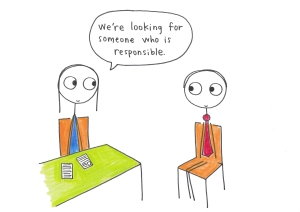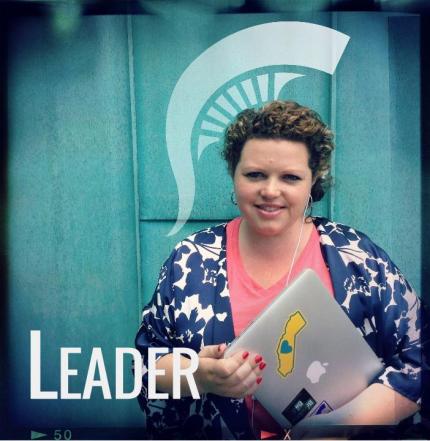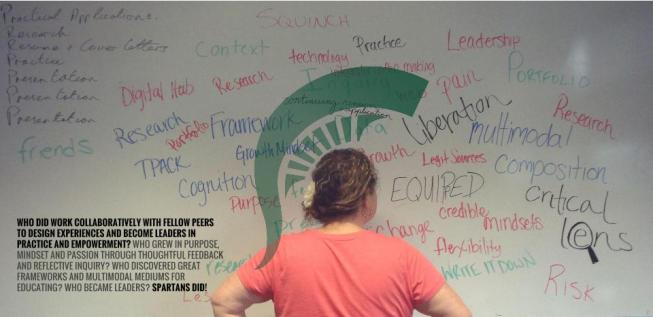Uncategorized
My Teaching Vision
Education sits between a rock and a hard place, I believe it always has. I believe this because today’s education model is educating students based on early 20th century needs. However, I also believe that education knows that we need to start educating our students for working on wicked problems and jobs that don’t yet exist. But how? This is a difficult question to answer.
I believe that we can begin to move in the right direction through designing our standards, lessons and projects around the INDIVIDUAL student, with real world situations and real world solutions. This may look different for each and every student. As educators our lessons should not be generic and mandated by someone who does not know the students individually. It is my goal to help educators use human centered learning allowing all learners to play and tinker, create and innovate, to experience and take risks.
In his dissertation “Unflattening” Sousanis said, “A distance between always remains. There are always gaps: spaces for the unknown openings for imagination to spill into. Incompleteness reveals that there is always more to discover” (150). I envision a need to create opportunities for learners to fill these gaps with deep learning, problem solving and creative thinking. One way to do this is through facilitation of a journey that is individualized through goal setting and diving deep into their desires to find the gaps in creativity that allow for innovation.
Another way is to make sure that the arts are being fused into all subject areas. This will take learning to that next level to allow for the creative mind to find the gaps that would be missed otherwise. Putting subjects like music and art at the same rigorous levels as science and mathematics because the arts have their own set of knowledge, tools and techniques which all come with their own “imaginative tools” used in humanities and the sciences.
The third way I believe will aid in filling the gaps with innovation and creativity is through mentorship. All learners need a good mentor. I plan on being a mentor by helping to create a learning experience that is duplicatable, fosters individuality and personal professional growth. Allowing for risks to be taken from me and those learning with me and all of us working through the productive failures and seeing them as professional growth.
So again, I am brought back to the rock and a hard place. I believe that by looking at the education model through the lens of unknown openings for imagination to spill into, I will be able to help fill the gaps that are lacking in the current education model.
Root-Bernstein, R. S., & Root-Bernstein, M. (1999). Sparks of genius: The thirteen thinking tools of the world’s most creative people. Boston, MA: Houghton Mifflin.
Sousanis, N. (2015). Unflattening. Cambridge, MA: Harvard University Press.
iInfographic
Project: Create an infographic to highlight statistical, timeline, process, or geographical-based information.
Goal: To show your audience “what they should look for among the clutter of detail” (Root-Bernstein, 1999, p. 89)
This was by far my favorite project! Below you will see my workflow and thought process on how I narrowed down my audience and abstracted the information into one concise piece of art.
- Started out with a lot of thoughts for an infographic, I initially wanted my audience to be special education teachers.
- Tech in SPED-using tech to track data of IEP goals
- How to write a robust goal (SMART Goals)
- IEP Process- IEP timeline
- IEP data tracking & goal tracking
- How to add tech to content
- Classroom Management
- Social Skills (for students)
- Visual Schedules
- After crossing a few off on my own I took four ideas to my professor and she asked that I write out what I would place on each of them. The How? The Why? The What? of each one. I did this for IEP process, data tracking, measurable goals, visual schedule & IEP process.
- This morphed into a 5th one, The Transition plan.
- In class we were able to do some peer mentoring,by the end of which I had narrowed my idea down to one: the IEP process.
- My audience had also changed from special education teachers to general ed teacher and parents.
- It was now time to gather information. What was the process in California? I also decided that I really wanted to include the time that each section had to be completed and the people involved in each step.

- Now came time for sketching. What did I want my infographic to look like? I watched several videos in a Couresa class about infographic design, went to Pinterest and looked up some designs and took several designs that I liked and mashed them together to create 4 drastically different designs.
- After taking the designs to another professor I had, ideating about each design and taking a look at my skills in Adobe Illustrator, of which I had none at the time, I decided to go with one that I knew I would be successful at completing and not get too frustrated.
YouTube was my best friend in working with Illustrator and the amount of time that I put in learning and ‘storyboarding’ or planning my infographic really showed. I wanted a clean look with gender neutral colors that complemented each other. I believe that my infographic turned out exactly how I envisioned. It took a lot of revisions and struggling through the process of learning how to create a good infographic AND how to use Adobe Illustrator. Sansing_infographic

iVideo-Dignity
“The creative process is a process of surrender, not control.”
Julia Cameron
You will develop an i-Video – an elegant, concise, powerful video that inspires the viewer to consider an important educational idea.
Finding Validity in Online Sources
You can believe everything you find on the internet, right? It’s there, all the facts are printed. It must be true. The truth is we live in an amazing time in history where anyone can share the information that they have learned. Everyone can be an expert. But, how do we decipher between the experts who truly have valid knowledge and those who are just sharing what they think or may have heard somewhere?
The following are a set of lessons that I have designed using the respected college and university writer and educator, Robert Harris’, CARS method of Evaluating Internet Research Sources. Use them in your class how you see fit, however remember that these are Robert’s ideas and conclusions so please credit him. (for purposes of an interview I have only created one lesson right now Lesson 2: C is for Credibility, however I am going to finish the rest soon as this is an important topic)
Lesson 1: Reliable Information is Powerful Information: Introduction to CARS
Lesson 2: C is for Credibility (Screencast)
Lesson 3: A is for Accuracy
Lesson 4: R is for Reasonableness
Lesson 5: S is for Support
Final Activity: Teams of 4 write and create a Public Service Announcement, can be on any of the CARS in any modality: printed advertisement, infographic, 90 second commercial, song, etc.
References:
Harris, Robert. 2015. Evaluating Internet Research Sources.
Discipline & Adventure
 It’s the beginning of a new year. 2016! And I can’t help but stop and think about 2015 and all of the fun, fear, amazingness and growth that came from this past year. But the past is in the past and as I looked forward to 2016 I was listening to a travel podcast that I love, ZerotoTravel.com. The creator, Jason, in his last podcast of 2015 entitled; Travelosophy: The George Costanza Approach to Reaching Your Travel Goals, spoke about a specific episode of Seinfeld where George Costanza, who apparently always made wrong or bad life decisions, was told by Jerry to make the opposite decision of what he thought he should do. Continue reading
It’s the beginning of a new year. 2016! And I can’t help but stop and think about 2015 and all of the fun, fear, amazingness and growth that came from this past year. But the past is in the past and as I looked forward to 2016 I was listening to a travel podcast that I love, ZerotoTravel.com. The creator, Jason, in his last podcast of 2015 entitled; Travelosophy: The George Costanza Approach to Reaching Your Travel Goals, spoke about a specific episode of Seinfeld where George Costanza, who apparently always made wrong or bad life decisions, was told by Jerry to make the opposite decision of what he thought he should do. Continue reading
#TRTC15 Reflection
 I helped my district to do a tech conference this week. I remember when they told us about it a couple of months ago and they scheduled the dates and everything and I was actually really nervous. Continue reading
I helped my district to do a tech conference this week. I remember when they told us about it a couple of months ago and they scheduled the dates and everything and I was actually really nervous. Continue reading
This Spartan…
This Spartan Did…
…become an adventure hacker.
…become a mindhacker.
…become a Special Education hacker.
This Spartan is…
…the Ripple Effect in her community.
I am the ripple effect for the learners in my school, my district and my community. I am a leader. I am a collaborator. I am looking at the world with an open mind and seeing everyday objects in new ways. I am a creator and an innovator. At first is it difficult to see the effect and objects that I want to see differently but as I begin to embody this new way of thinking the phenomenon grows and I can’t stop it, I just let it flow.
In a ripple effect, ripples flow across the surface growing larger in diameter and height as it moves outward. The ripple effect of MSU, MAET and it’s professors, my peers & colleagues has touched me and I have began to create my own ripple effect.
This Spartan Will…
Resources:
Ripples of water video remixed from: youtu.be/-DdSGOCCFpE
Practice, Feedback & Reflection
By: Joy Zaher & Alicia Sansing
Unifying Definitions:
Practice: the actual application or use of an idea, belief, or method reproduced over time as opposed to theories relating to it.
Feedback: information about reactions to a product, a person’s performance of a task, etc. which is used as a basis for improvement.
Reflection: 1) serious thought or consideration. 2) a thing that is a consequence of or arises from something else.
Why reinvent the wheel? We borrowed and remixed ideas from Dan Meyer (math guy) who has an awesome blog post about changing teaching by modelling it after Angry Birds. Not only does this method work with students but it will also work with educators as we think about our own practice and the ways that we need to make it more obtainable to our learners, peers and leaders. Following are ideas that we can use as professionals and educators.
- Make it easy to start the task.
- start with something they already know how to do, and get them doing it
- Don’t over plan- frontload, don’t plan the outcome
- Show, don’t tell.
- Wider audience, outside of the classroom, show your work with a blog, website and/or online portfolio w/reflective blog
- Give useful and immediate feedback.

- Great ideas for how to give feedback to students & teach them how to do it http://www.teachthought.com/learning/20-ways-to-provide-effective-feedback-for-learning/
- Use alternative due dates for different classes
- Give student work back at the beginning of class to allow time for questions
- Organize student-led conferences
- Make it easy to recover from failure.
- Model with video, feedback
- Having a mentor
- Ask students for feedback rather than constantly providing them with feedback
- Complicate the task gradually.
why reinvent the wheel- borrow, remix, reuse (ie. use yesterday’s exit ticket as a warm up for today)
Resources
- Allow/encourage/require test corrections
- Great suggestions for what teachers can do to allow students to take more responsibility fo their own learning https://whatedsaid.wordpress.com/2010/06/29/10-ways-to-encourage-students-to-take-responsibility-for-their-own-learning/
Helpful information about methods of practice
- A really helpful blog post about practicing an instrument, though much of this information could transfer across disciplines http://www.hornsociety.org/publications/hornzone/578-effective-practice-strategies
Authentic Experiences with MAET Overseas
 Often times applying for a job is a very exposing moment in our lives. Resume, cover letter, letters of recommendations, proof of tests taken, proof of schooling. Do I have enough schooling? Am I qualified for this job? How can I demonstrate that I have what it takes to do this job? Did I edit it enough, are there spelling mistakes, can I squeeze in one more line, how small of a font is too small? All of this before the interviewing process. Ugh! Then the interview. Personally I have always been pretty good at interviewing but I have also always applied for a job that I was totally and completely confident that I could do and do it well. Not that I was the most qualified but that I was the best person for that particular job. And I went in knowing that.
Often times applying for a job is a very exposing moment in our lives. Resume, cover letter, letters of recommendations, proof of tests taken, proof of schooling. Do I have enough schooling? Am I qualified for this job? How can I demonstrate that I have what it takes to do this job? Did I edit it enough, are there spelling mistakes, can I squeeze in one more line, how small of a font is too small? All of this before the interviewing process. Ugh! Then the interview. Personally I have always been pretty good at interviewing but I have also always applied for a job that I was totally and completely confident that I could do and do it well. Not that I was the most qualified but that I was the best person for that particular job. And I went in knowing that.
It wasn’t until I began to see myself in a leadership and possibly technology leadership and mentor roll that I began to feel more exposed and retreated more and more into the comfort zone of my classroom. During the summers of 2014 and 2015 I have been surrounded with peers, colleagues, models and mentors that are amazing at what they do in their roles in leadership, mentorship, teaching and technology. I have this very strong desire to become more like them.
During this summer in the MAET Overseas Program we had the opportunity to not only apply for some mock jobs in the area of technology and leadership but we were also able to see how a hiring committee would ask questions and want a candidate to answer these questions for the job. We were able to see their thought process before bringing in the candidate and actually see the mock interviews. Last, we were able to have our mentors and models sit on a panel and debrief a little about the interviewing process in general. I personally feel that this was an invaluable process that we had the privilege to take part in.
There were three big takeaways for me…
It’s “we” not “I.” The hiring team wants to hire someone who can work with other people and has proof that they have done so in the past. Show them how you do this by answering the question with an example of collaboration, co-teaching, leading a team, dealing with difficult people and handling conflict in a diplomatic way.
My digital presence is extremely important. A hiring committee is looking me up before I even get a phone call. Am I proud of what I look like to others out there in the digital world? What kind of branding have I creating for myself as a educator, professional and even personal life. I am doing something in my class. Cool assignments, project that fail, professional development for staff members, where am I keeping this proof? Can it all be accessed by those who I want to see it someday? Who is telling my story? Me, my school district or my students?
Last, be authentic. This not only means to make it real and be me but to be authentic about my digital presence and my evidence of living the digital life. The stuff that I do (educational projects, master’s program, teaching, being the best auntie) is very important. Capture it in an authentic manner. If I truly want to teach my students to be involved and engaged problem solvers then we need to be a model for them.
Again, this experience of completing a mock job application, seeing the interviewing process from start to finish and getting feedback from mentors and models that live this daily has been an extremely valuable experience for me personally. I can now see myself applying for positions in leadership and technology that I would never have applied for in the past. However I can also see where I need to improve and live the life that I’m asking others to do as well. What an amazing experience!
Resources:
photo from:https://www.flickr.com/photos/thedailyenglishshow/13422679555










